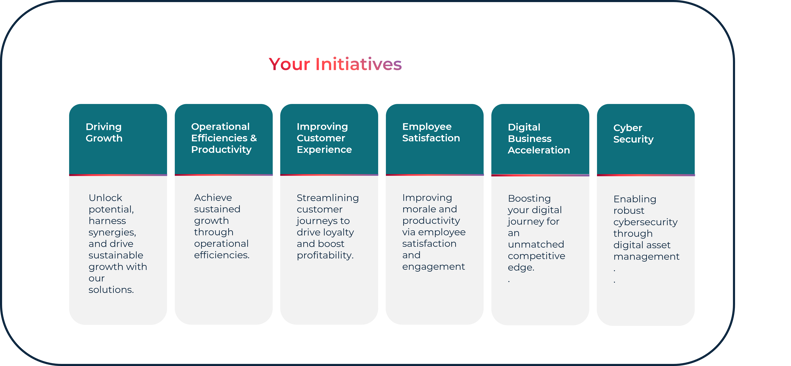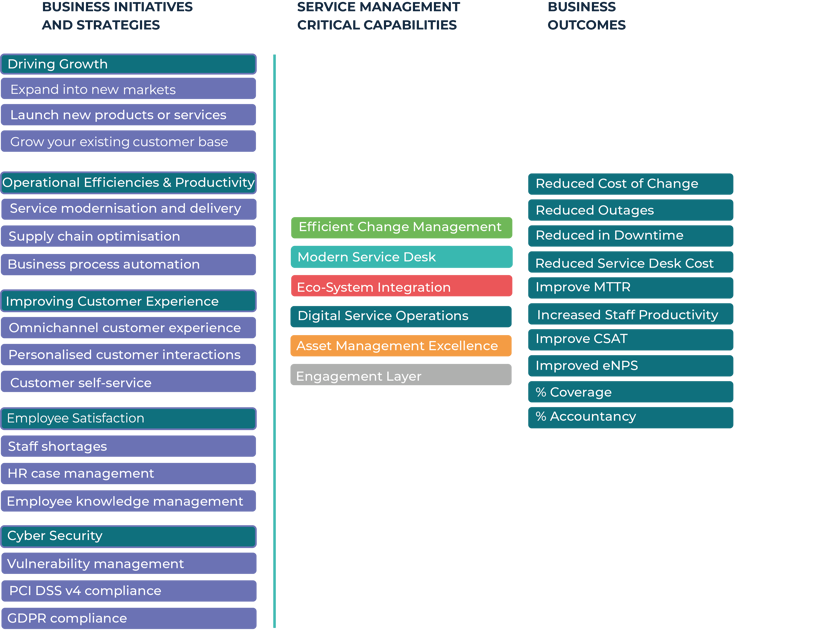Customer Success Story: Arcadis
Arcadis is a global design and consultancy firm delivering sustainable solutions across infrastructure, water, buildings, and environmental projects.
Read moreExpectations are shifting. Employees want easier ways to work, customers expect faster, more personalised, and lower-cost service, and businesses need to scale, cut costs, and use data to make smarter decisions in real time.
To meet these needs, companies must connect service management directly to their business goals, with cost reduction and operational efficiency at the forefront. Service management can no longer be just a back-office function—it must become a proactive engine that drives growth, agility, and measurable outcomes across the organisation.
But that connection is weakening. As AI, automation, and new engagement tools accelerate change, service management often falls behind. This misalignment leads to higher costs, reduced service quality, and inefficiencies that slow progress. Teams are pulled into firefighting mode, managing symptoms rather than solving root causes—wasting time and missing opportunities to improve value and performance.
And while the business pushes ahead, service management isn’t always keeping up. This disconnect leads to delays, rising costs, and slower service. Teams get stuck firefighting problems instead of driving progress. Employees face manual processes, and customers experience inconsistent, slower support. With every shift, the gap between service management and business goals widens.
So how can businesses close that gap—and ensure service management drives change instead of trailing behind?
The answer is Value Adoption Services (VAS): a clear, structured approach that links service management to digital business goals. VAS replaces reactive fixes with a data-led model using insights, structured scorecards, and best practices to pinpoint where to focus and how to drive growth, efficiency, and operational excellence. Every improvement is measurable, consistent, and aligned to business outcomes.
We use data-driven diagnostics and AI analysis to uncover inefficiencies, automation opportunities, and experience gaps. Performance is benchmarked against peers and industry standards, creating a clear baseline and competitive context to prioritise improvements.


We use data-driven diagnostics and AI analysis to uncover inefficiencies, automation opportunities, and experience gaps. Performance is benchmarked against peers and industry standards, creating a clear baseline and competitive context to prioritise improvements.
Insights are mapped directly to business priorities—whether growth, productivity, efficiency, resilience, customer or employee experience, or regulatory compliance. This ensures every initiative drives measurable impact where the business needs it most.

With priorities set, a structured roadmap breaks initiatives into manageable phases—sequencing quick wins and longer-term goals. This builds agility, secures executive sponsorship, and enables focused investment planning.

AI-driven scorecards to track performance and measure maturity, ensuring continuous improvement.
Execution is tightly governed and outcome-driven. Expert teams manage delivery, risks, and optimisation—ensuring disciplined rollout and measurable business impact.
Regular reviews refine strategy based on results, market shifts, and new priorities—ensuring continuous improvement, sustained impact, and alignment with evolving business needs.